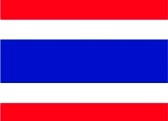All Categories








About Tokyo Xtreme Racer
Product description Disc(s) only. Ships in generic case. Disc(s) are professoinally cleaned. Guaranteed functional or replacement. Amazon.com Curious about those individuals who drive tricked-out Japanese cars? You know, the lowered Hondas with tires so wide they extend beyond the fenders, the souped-up Toyotas with super-sized exhaust pipes, and the custom-painted Nissans with tinted windows and back windshields adorned with a adjectives such as "wicked"? Wonder no more. Tokyo Xtreme Racer delves into the world of highway racing featuring customized Japanese autos. The basic premise: cruise the Tokyo highway until you find someone who looks a bit too cocky, flash your lights to signal your racing intentions, and commence speeding. The racing physics in the game aren't perfect and the graphics may not bowl you over, but TXR is a lot of fun and it can be a very deep game for dedicated players. There are hundreds of prospective opponents, and plenty of ways to upgrade your car, but the one element that will no doubt turn off American racing gamers is that there's only one track for the entire game. If you can handle that, and the lack of any apparent damage from collisions, then TXR is good fun. --Jeff Young Pros: High replayability Impressive replays Unique concept and design Cons: Only one track Graphics are nice, but don't push the Dreamcast's capabilities Review Just as Genki furnished Tokyo Highway Battle for the debut of the Sony PlayStation, it's prepped a sequel for the launch of the Sega Dreamcast. In it, you cruise along the Tokyo freeway looking for cars to compete with. Once you spot a possible contender, you flash your lights to issue a challenge, and the race is on. And that's the point where Tokyo Xtreme Racer diverges from most other racing games out there. Instead of driving on a number of courses against a volley of different cars at the same time, you compete in a series of short one-on-one races on two different stretches of the same turnpike. Your goal is to keep ahead of your rival on a stretch of road for longer than he leads you. Each driver has a meter that counts down whenever he's in second place; if it runs out, he loses. The farther one car is ahead of the other, the faster the trailing vehicle's meter counts down. Beyond that, TXR is similar to other racing games where you earn money by beating your opponents, which you then spend to beef up your ride or buy new cars, or in this case, so you can compete against faster and tougher members of the city's racing gangs. Tokyo Xtreme Racer's break from the norm could be compelling, perhaps, if you were driving through the city streets instead of the highway, or if the game took a break from reality to invent additional and more interesting courses. As it stands, the game has only two monotonous loops to race on, and driving on them gets quite dull, even in two-player mode. The graphics are the best thing about TXR, and even those are a bit of a mixed bag. The frame rate is fast, there's virtually no pop-up to speak of, and the trailer effect caused by the cars' taillights is nice, but the car models leave something to be desired, and the two courses are plain, have repeating features, and don't even offer up the mirrored, backward, or different weather variations that we've come to expect from driving games of all styles. The soundtrack is only average; it doesn't detract from the experience of playing, but it doesn't add to it either. TXR's physics are unrealistic even by arcade racing-game standards. If you hit a divider head-on at 90 miles an hour, you bounce back a few feet like a large unbreakable box that always lands right side up, and you start back up with no discernable damage to the car. Sliding up against a wall will cough your speed back a bit and knock you towards the center again, but more like a plastic toy car than a real vehicle. Besides its arcade-style features, TXR provides a racing-sim aspect by letting you fidd




 (5)
(5)




















